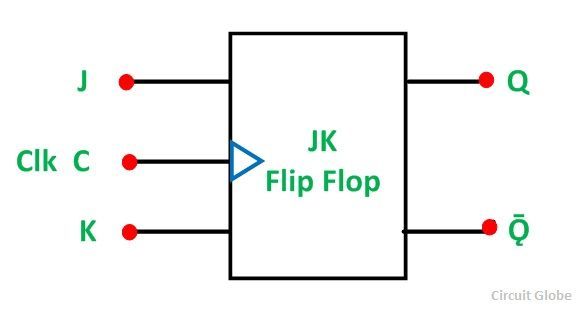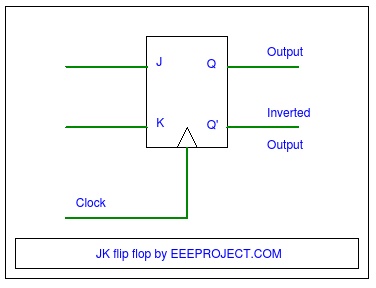

- #JK FLIPFLOP LOGICWORKS HOW TO#
- #JK FLIPFLOP LOGICWORKS CODE#
- #JK FLIPFLOP LOGICWORKS PC#
- #JK FLIPFLOP LOGICWORKS SERIES#
#JK FLIPFLOP LOGICWORKS HOW TO#
#JK FLIPFLOP LOGICWORKS PC#
The PC increments once on each clock cycle, and the next program instruction is then executed.The PC keeps track of the instruction currently being executed.Programs consist of a list of instructions that are to be executed one after another (for the most part).All processors contain a program counter, or PC.How many steps have been performed in some computation?.How many bits have been sent or received?.You may need to record how many times something has happened.Counters can act as simple clocks to keep track of “time.”.


We’ll soon look at some extensions to this basic idea.Using two bits, we’d get something like this:.After the largest value, the output “wraps around” back to 0.The output value increases by one on each clock cycle.Like registers, the state, or the flip-flop values themselves, serves as the “output.”.Counters are a specific type of sequential circuit.Countersġ 10 00 1 1 01 11 1 Introducing counters These are not only examples of sequential analysis and design, but also real devices used in larger circuits, as we’ll see in the coming weeks.Next, we’ll look at different kinds of counters and discuss how to build them.Please check my work and see if you agree. The JK-type has two inputs and the others have just one input.įor each kind of possible transition, their inputs are represented in the following table: Most often, these tables are meant to help when using JK-type (JKFF), toggle-type (TFF), or D-type (DFF) flip flops. Once produced, they are usually turned into k-maps for minimization purposes.
#JK FLIPFLOP LOGICWORKS CODE#
They aren't hard to make and it would be very easy to write some code expand any given sequence into these tables.
#JK FLIPFLOP LOGICWORKS SERIES#
And I don't, off-hand.) Excitation Tables and FF TypesĮxcitation tables are often used to work out the combinatorial logic needed to transition a set of FFs holding the current state into the next desired state for some arbitrary (usually circular) sequential series of states. (Unless you have prior knowledge to apply. So the better option for hand work is to assume a simple sequence. (With a computer program, you might be expected to do that. There are 720 possible sequence permutations to analyze if you wanted to exhaustively explore every arrangement in order to select by brute-force a fully optimized design result. So would be just as good as, since all that matters is that it appears random to the user. On a dice-roller circuit, it probably doesn't matter what order those states are generated. I'll see if I can suggest a usable path to try.


 0 kommentar(er)
0 kommentar(er)
